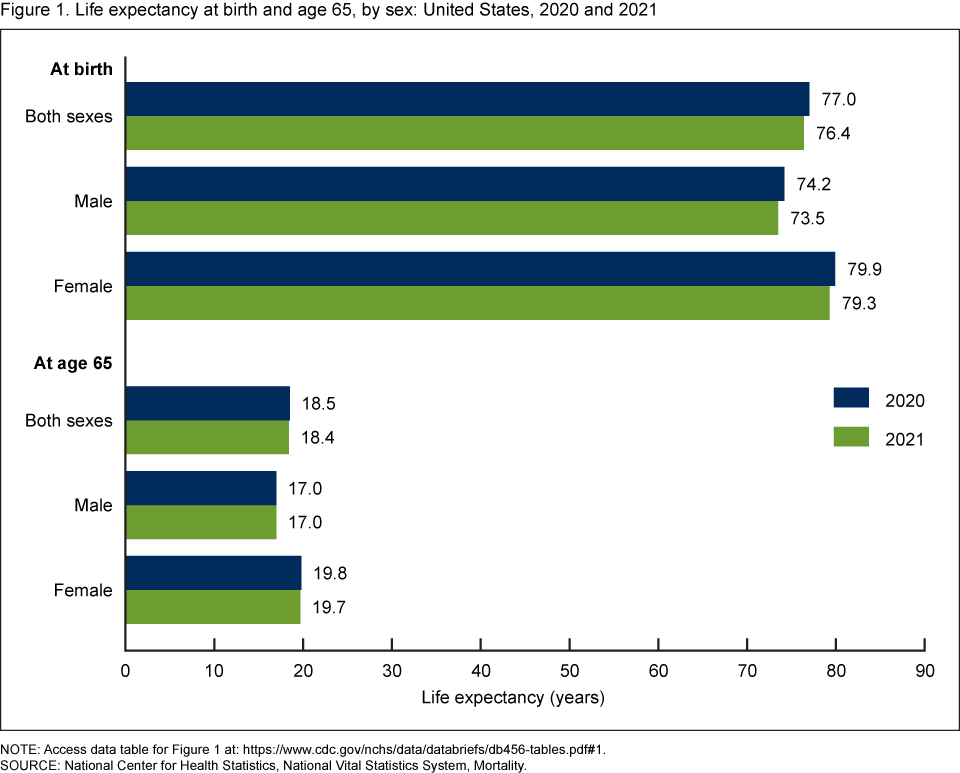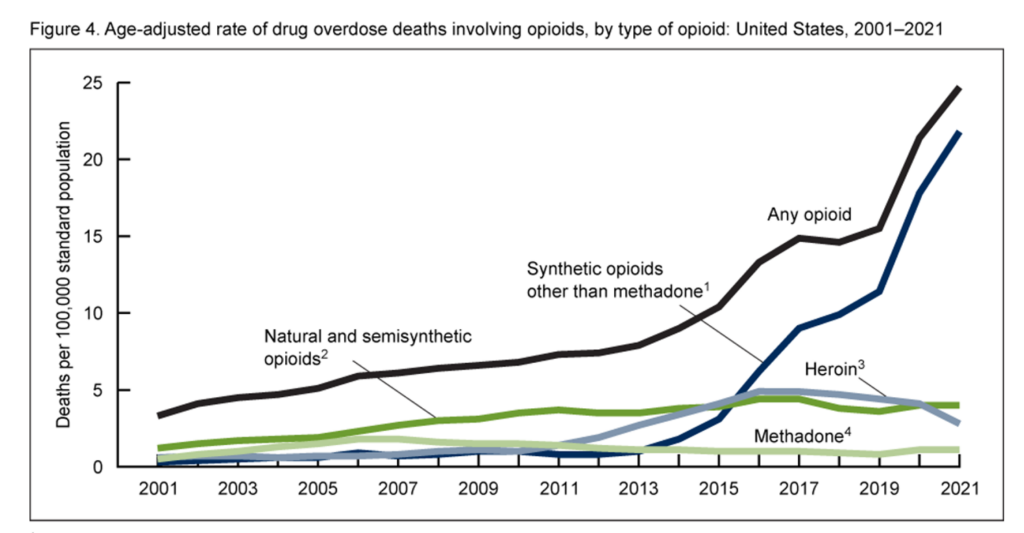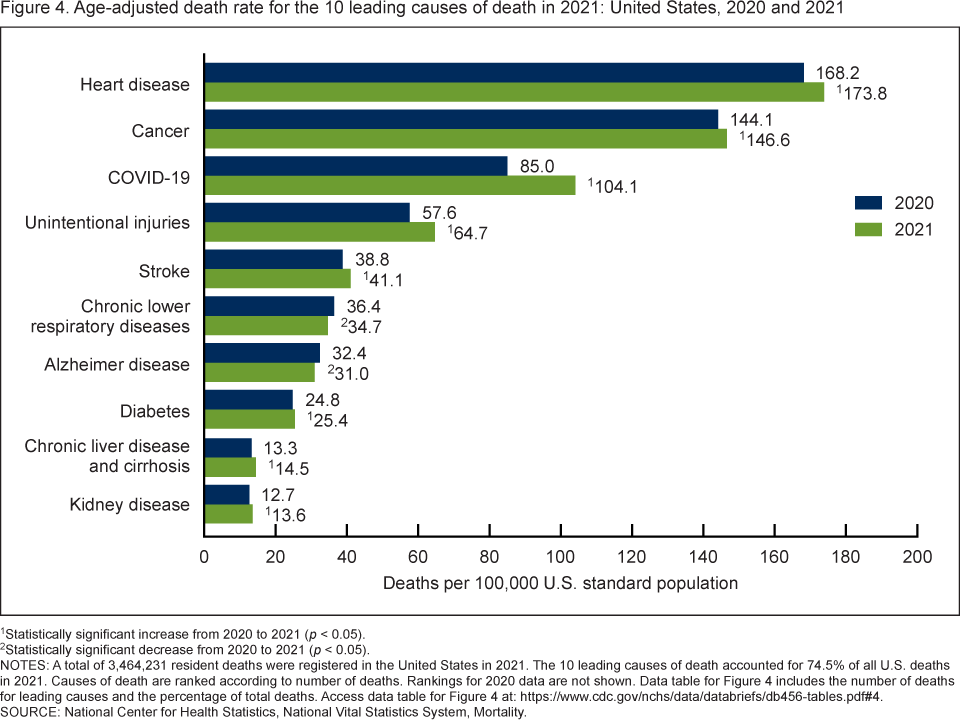Life expectancy in the U.S. dropped nearly three years between 2019 and 2021, from close to 79 years down to 76.
We ended 2022 with this new, sobering statistic from the Centers tor Disease Control (CDC).
We begin 2023 with the opening of CES 2023, the world’s largest annual meet-up of consumer electronics innovators, companies, and retailers.
How can digital health and other consumer-facing technologies help our health?
First, consider the stark data point(s), and then we can better respond to the question’s answer in the Hot Points, below.

In case you missed it in your pre-holiday wind-down, the CDC published two reports on declining life expectancy in America on December 22, 2022.
Here are links to those two reports:
Mortality in the United States, 2021, and
Drug Overdose Deaths in the United States, 20021-2021.
“The drop [in life expectancy] was primarily due to increases in COVID-19 and drug overdose deaths,” the CDC summarized in the reports’ release.
This is the largest fall in U.S. life expectancy in a two-year period since the early 1920s during that era’s dramatic economic shock/decline.
This time around, national news media are covering Americans’ shortening life-span with headlines like,
- “U.S. Life Expectancy Falls Again in ‘Historic’ Setback,” as covered in The New York Times
- “American life expectancy is now at its lowest in nearly two decades,” via NPR, and
- “Covid-19 and drug overdoses drive US life expectancy to lowest level in 25 years, CDC reports,” in CNN.

As to CNN’s headlining those drug overdose deaths reducing Americans’ life-years, this line chart from CDC’s report tells us which drugs are especially responsible: the fast-growth line is for synthetic opioids (read: fentanyl). For important insights into this devastating risk-trend, read this Washington Post coverage published just a few days before the CDC reports came out.
![]()
One last comparative point to keep in mind: the U.S. is an outlier in the relatively large statistical drop in life-span compared with other nations, even accounting for COVID-19 impacts on populations by country.
As this chart from Kaiser Family Foundation and the Peterson Center’s Health System Tracker clearly illustrates, health citizens in the U.S. marked the lowest life expectancy and by far the greatest health spending per person than any other wealthy country tracked in the list of wealthy countries.
Doing the simple math, that’s over six years fewer life-years for an American health citizen with roughly twice the health care spending.

Health Populi’s Hot Points: N0w to the question at-hand for the week: can consumer-facing technologies help us bolster our health and well-being and — Holy Grail time — reverse the U.S. decline in life expectancy?
Check out the top causes of mortality in 2021: the death rates for heart disease significantly rose from 2020 to 2021, as did the rates of death due to unintentional injuries (those so-called Deaths of Despair from overdose, suicide, and accidents), and to be sure, COVID-19.
At CES 2023, we’ll see innovations for consumers to help deal with heart health, from prevention to tracking to avoiding stroke — from the likes of AliveCor, Fitbit, OMRON, and Withings, among many others. Inf act, heart health is table-stakes for much of wearable technology in 2023. The American College of Cardiology collaborated with the Consumer Technology Association at CES 2020, so this category has been evolving for some years.
How about those Deaths of Despair? How can technology help us address addiction, loneliness, and other contributors to this seemingly intractable challenge for U.S. public and personal health? We cannot expect Technology itself to be a panacea to this national tragedy that public policies must help solve in terms of underlying drivers of health and well-being.
But there are technology innovations that can help people deal with addiction through, for example, digital therapeutic solutions . For mental health — particularly, low-to-mid-level anxiety and depression — there are cognitive behavioral therapy apps and tools that have been shown to be useful for many patients backed by clinical evidence. At CES 2023, we will also see alcohol-sensing technologies, automotive safety features, and solutions for people dealing with pain, among other pioneering devices and features embedded in products focused on healthy living and smarter, safer homes and mobility.
Bolstering the impact of digital health technologies — and particularly remote health monitoring and clinically-prescribed wearable tech — was the late December 2922 health policy news that telehealth provisions would be included in the FY2023 Omnibus Appropriations Bill. Specifically, there is a two-year extension of Medicare telehealth services that began in the early coronavirus era in 2020. These will now be in place until the end of 2024.
To put a fine point answering our question, there is evidence that technology can enable and scale programs and services that channel drivers of health to people when designed with intention, value- and values-orientation, and privacy-by-design. This is front-of-mind for me this week as I explore the myriad announcements and innovations emerging from CES 2023 — in and outside of the digital health tent.




 Interviewed live on BNN Bloomberg (Canada) on the market for GLP-1 drugs for weight loss and their impact on both the health care system and consumer goods and services -- notably, food, nutrition, retail health, gyms, and other sectors.
Interviewed live on BNN Bloomberg (Canada) on the market for GLP-1 drugs for weight loss and their impact on both the health care system and consumer goods and services -- notably, food, nutrition, retail health, gyms, and other sectors. Thank you, Feedspot, for
Thank you, Feedspot, for  As you may know, I have been splitting work- and living-time between the U.S. and the E.U., most recently living in and working from Brussels. In the month of September 2024, I'll be splitting time between London and other parts of the U.K., and Italy where I'll be working with clients on consumer health, self-care and home care focused on food-as-medicine, digital health, business and scenario planning for the future...
As you may know, I have been splitting work- and living-time between the U.S. and the E.U., most recently living in and working from Brussels. In the month of September 2024, I'll be splitting time between London and other parts of the U.K., and Italy where I'll be working with clients on consumer health, self-care and home care focused on food-as-medicine, digital health, business and scenario planning for the future...